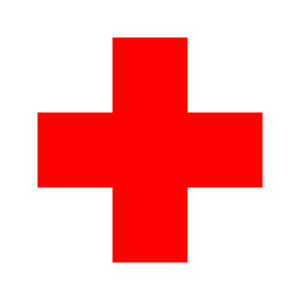 Today I took a Basic First Aid course with the British Red Cross as I need the qualification to work in gyms. Aside from good revision of first aid, it was also interesting from a body-mind point of view. The tutors were down to earth people with plenty of experience of bodies and no experience of the kind of practices this blog is primarily concerned with.
Today I took a Basic First Aid course with the British Red Cross as I need the qualification to work in gyms. Aside from good revision of first aid, it was also interesting from a body-mind point of view. The tutors were down to earth people with plenty of experience of bodies and no experience of the kind of practices this blog is primarily concerned with.
One of the tutors called a largish lady to the front to demonstrate how to get people into the recovery position. The trainer got very frustrated when she couldn’t raise the lady’s knee. “Relax your leg!!! The trainer commanded. “How?” the girl asked. It wasn’t that she didn’t want to relax, it was that she didn’t know a mechanism to accomplish this*. The tutor clearly had no idea how to touch someone in a way that engenders trust and relaxation and resorted to shoving the young lady around. The recovery position has been developed for use on unconscious bodies so don’t think the tutor had no skill, it was just the wrong set of skills to move a living conscious body.
Responsive to loud “aggressive” words
Responsive to shaking
Responsive to Pain
Completely Unresponsive
– “Unconscious people are very heavy, especially the head.”
– “About half the population breaths mainly with their chests (stressed/emotive breathing) and half primarily with their bellies (relaxed diaphragm breathing).”
– “The body knows when its in trouble even when there are no obvious outward signs. People become very emotional for seemingly no reason.” Further, certain quite specific emotional stances are correlated strongly with certain disorders, e.g. hypoglycemia and stubbornness. The tutors didn’t find this interesting.
– “You can tell a lot about a person just from their pulse.”
– “Calming people down is the first stage in helping them get better.”
– “The heart and lungs are the crucial bits. Keeping the brain going is most important thing, don’t worry if you break a few ribs” (during CPR).
My generalised learning from today was: